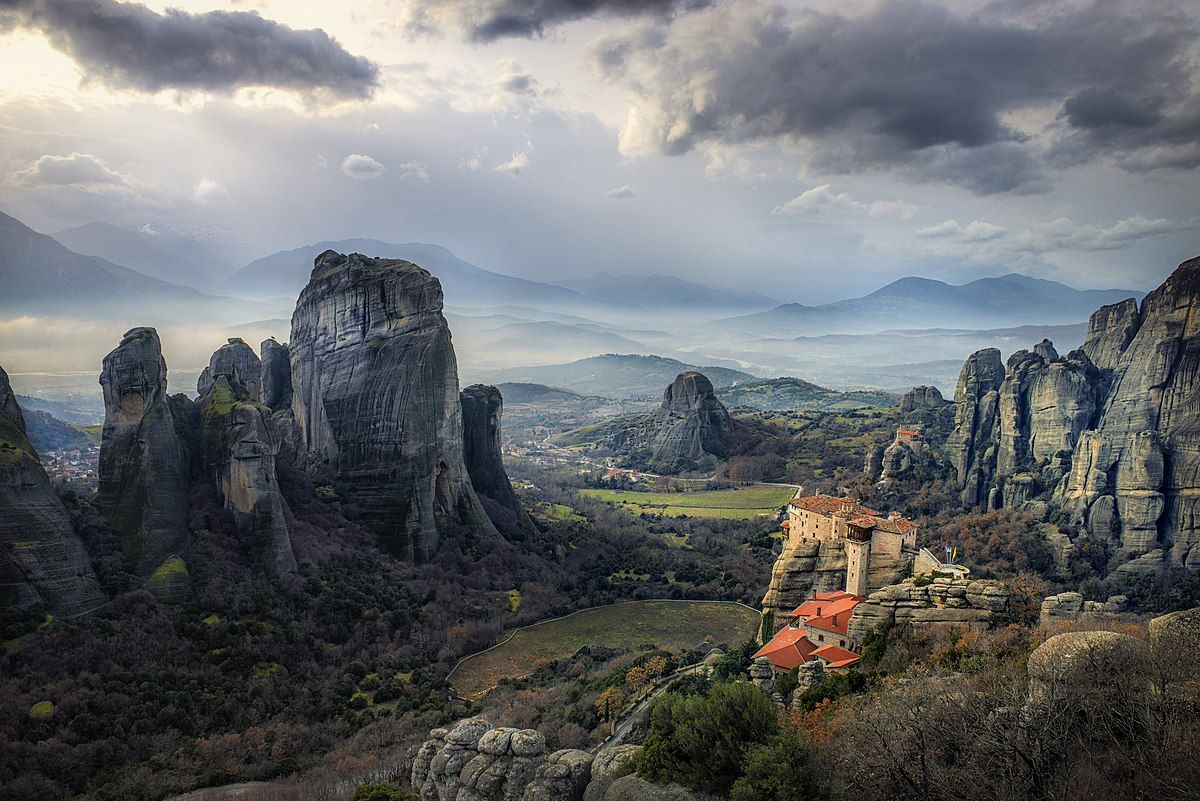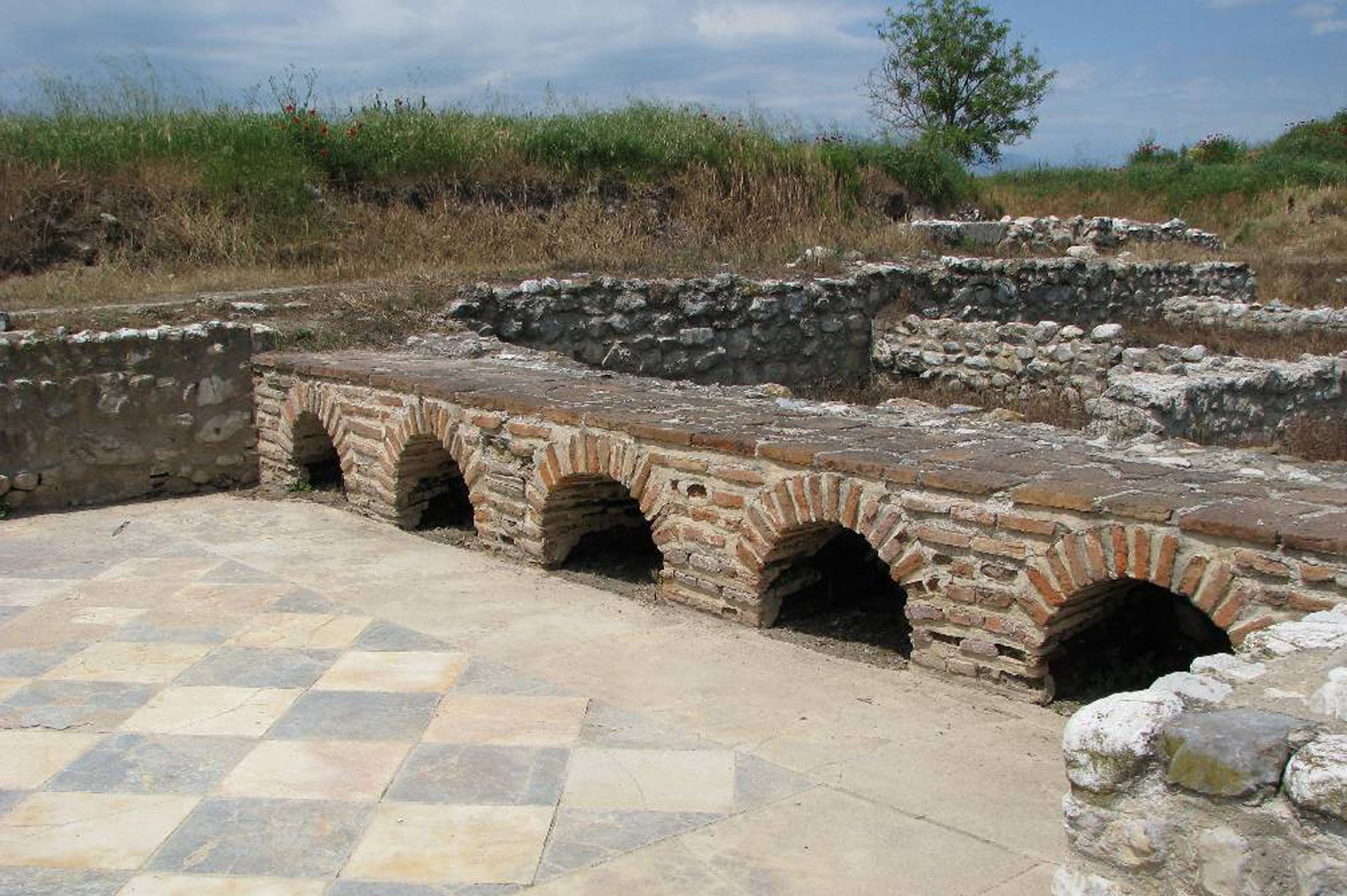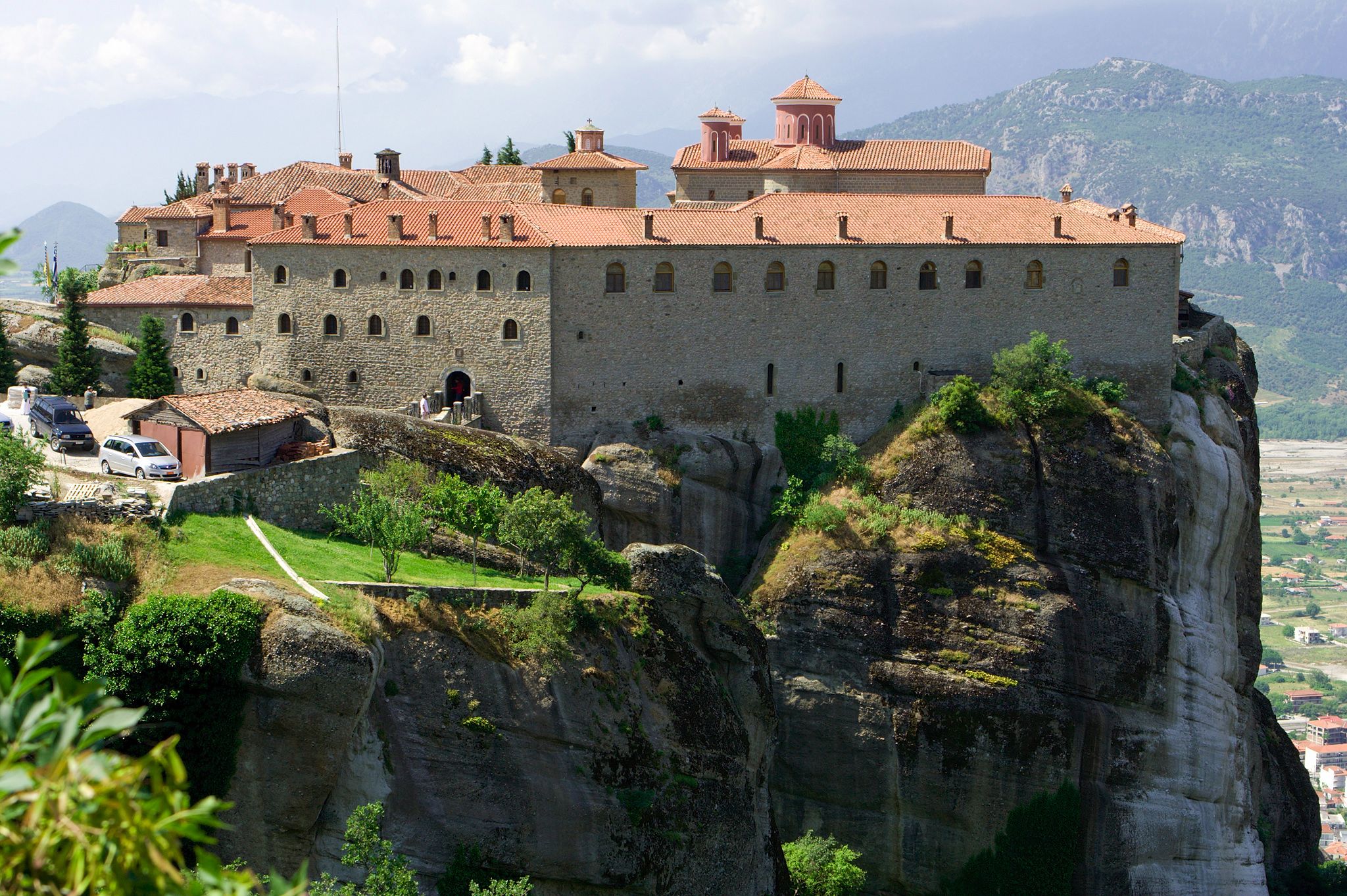Meteora, Vergina, Dion ancient monuments
Meteora
The extraordinary combination of the giant cliffs with the Greek Christian Orthodox Monasteries build on top of them is a must for everyone to see. The monasteries of Meteora are constructed on top of natural sandstone rock pillars and the most amazing is that these rock pillars emerge in the middle of a valley.
According to scientists, these pillars were formatted about 60 million years ago, during the Tertiary Period. Once the area was covered by the sea, but a series of earth movements caused the seabed to withdraw. The mountains left were continuously hit by strong winds and waves, which, in combination with extreme weather conditions, affected their shape. This is why the pillars are composed of sandstone and conglomerate.
Meteora is one the most spectacular places in the heart of Greece that everyone should visit. Don’t miss the chance to experience this geological phenomenon and admire the monastic communities, which are the great result of human ingenuity, faith and patience.
Today only six monasteries are active with a small number of monks or nuns who reside on Meteora. In 1988, the Meteora monasteries have been included in the UNESCO World Heritage List and the Meteora-Antichassia area is part of the Natura 2000 network hosting some rare species of birds and flowers. As you approach the town of Kalabaka, the nearest big town near Meteora , and the picturesque village of Kastraki you will see a complex of giant sandstone rock pillars that climb up into the sky. On top of them you will spot the famous Meteora monasteries.
Discover more here https://www.greeka.com/thessaly/meteora/geography/
Vergina
The city of Aigai, the ancient first capital of the Kingdom of Macedonia, was discovered in the 19th century near Vergina, in northern Greece. The most important remains are the monumental palace, lavishly decorated with mosaics and painted stuccoes, and the burial ground with more than 300 tumuli, some of which date from the 11th century B.C. One of the royal tombs in the Great Tumulus is identified as that of Philip II, who conquered all the Greek cities, paving the way for his son Alexander and the expansion of the Hellenistic world.
The visitor descending into the underground area of the tombs begins his tour with a reconstruction of the Great Mound, the monument that originally marked the site of the Royal Tombs and which no longer exists.
Τhe site represents an exceptional testimony to a significant development in European civilization, at the transition from the classical city state to the imperial structure of the Hellenistic and Roman periods. This is vividly demonstrated in particular by the remarkable series of royal tombs and their rich contents.
Discover more here https://whc.unesco.org/en/list/780/
Dion
Dion stands in the northern foothills of Mount Olympus, and exercises complete control over the narrow defile leading from Macedonia to Thessaly. Formerly a distance of only 7 stades from the shores of the Thermaic Gulf, it was the most important sacred city of the Macedonians. Here it was that Archelaos I, at the end of the 5th century B.C., first held brilliant festivals at which sacrifices were offered to Olympian Zeus and the Pierian Muses, and introduced theatrical and gymnastic competitions - the "Olympia ta en Dion" - which were still celebrated about 100 B.C. Here it was that Philip II celebrated the capture of Olynthos, the capital of the Chalkidian League, and here Alexander the Great sought the aid of the king of the gods before setting out for the East. And it was in the sanctuary of Zeus, finally, that the famous group was erected depicting twenty-five of Alexander's companions who fell at the Granikos' battle, the work of Lysippos.
Dion's walls, however, were, only 2.550 m. long, and its area was a mere 460.000 sq.m., and it never became more than a small township neither at the time of Thucydides, nor much later - in the early years of the Roman empire.
Discover more here http://odysseus.culture.gr/h/3/eh351.jsp?obj_id=2508
Arrivals
Arrival airports
Participants are expected to arrive through the Athens International Airport Eleftherios Venizelos, or Thessaloniki International Airport Makedonia, or Nea Anchialos National Airport.



